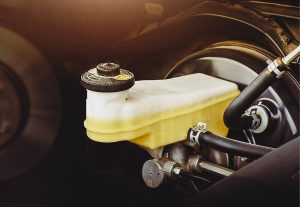Modern vehicles rely on precision and balance in their braking systems to ensure safety, comfort, and control. Among the essential components ensuring this balance is the brake booster — a device that amplifies the force you apply on the brake pedal, allowing efficient braking with minimal effort. When it starts to fail, however, you’ll notice significant changes in both braking distance and pedal feel — two critical indicators of your vehicle’s braking health.
In this article, we’ll explore how a faulty brake booster impacts stopping performance, what symptoms to watch for, and what you can do to stay safe on the road.

What Is a Brake Booster and Why It Matters
The brake booster uses vacuum or hydraulic pressure to multiply the force you apply to the brake pedal. Without it, stopping your car would require far greater effort — especially in heavy or high-speed situations.
There are two main types of brake boosters:
| Type | Power Source | Common Use |
|---|---|---|
| Vacuum Brake Booster | Engine vacuum assists braking. | Most gasoline vehicles. |
| Hydraulic (Hydro-Boost) | Uses power steering hydraulic pressure. | Diesel and heavy-duty vehicles. |
When the brake booster functions properly, the pedal feels responsive and the vehicle stops smoothly. When it fails, both braking distance and pedal feedback change drastically.
How a Faulty Brake Booster Changes Braking Performance
1. Increased Braking Distance
One of the first and most dangerous effects of a failing brake booster is a longer stopping distance. Because the system no longer multiplies your braking effort, you need to apply significantly more force to achieve the same braking pressure.
-
Example: A healthy booster allows the car to stop from 100 km/h in roughly 38–42 meters. A failed booster can extend that distance by 20–40%, depending on vehicle weight and road conditions.
-
This increased distance means less reaction time, especially in emergencies — greatly raising the risk of collisions.
2. Altered Pedal Feel
A malfunctioning brake booster makes the pedal harder to press. This change is immediately noticeable and should not be ignored.
| Pedal Feel | Possible Cause | Driver Experience |
|---|---|---|
| Normal, smooth, responsive | Proper booster function | Effortless braking, consistent feedback. |
| Hard and stiff | Vacuum leak or failed diaphragm | Requires excessive pressure; difficult to stop. |
| Spongy or inconsistent | Air in lines or partial booster failure | Uneven braking force, unpredictable feel. |
A hard pedal doesn’t necessarily mean the brakes don’t work — but it means your braking efficiency has dropped, and you may not be able to stop in time during sudden situations.
Common Causes of Brake Booster Failure
A brake booster can fail due to several reasons — often starting small but quickly leading to complete loss of assist:
-
Vacuum Leaks: Cracked hoses or worn check valves prevent proper vacuum buildup.
-
Damaged Diaphragm: The internal rubber membrane can rupture, eliminating assist power.
-
Faulty Check Valve: Prevents the vacuum from holding pressure when the engine is off.
-
Master Cylinder Leakage: Brake fluid leaking into the booster causes corrosion and internal failure.
-
Aging or Wear: Continuous use over many years weakens seals and connections.
How to Diagnose a Failing Brake Booster
You can perform a quick brake booster test at home:
-
With the engine off, press the brake pedal several times to remove any residual vacuum.
-
Hold down the pedal and start the engine.
-
If the brake booster works properly, the pedal should drop slightly under your foot.
-
If the pedal remains firm or unresponsive, the booster may not be working.
You can also listen for a hissing noise when pressing the brake pedal — a telltale sign of a vacuum leak.
Effects on Braking Distance — In Numbers
Here’s a simplified comparison between a healthy and a faulty brake booster under similar conditions:
| Condition | Pedal Force Required | Average Stopping Distance (100 km/h → 0) | Driver Experience |
|---|---|---|---|
| Fully Functional Booster | ~30–40 lbs (13–18 kg) | 38–42 m | Smooth, quick stop. |
| Minor Booster Leak | ~60–70 lbs (27–32 kg) | 48–55 m | Noticeably harder pedal, slower stop. |
| Complete Booster Failure | 100+ lbs (45+ kg) | 60–70 m+ | Very hard pedal, emergency braking difficult. |
Even small differences in stopping distance can mean the difference between a near miss and a collision.
Impact on Driving Safety
A faulty brake booster doesn’t just make braking harder — it compromises total control. Drivers may misjudge how much pressure to apply, especially in emergencies. In addition:
-
Fatigue increases: Constantly pressing a stiff pedal tires the leg muscles.
-
Reduced confidence: Drivers may feel uncertain about braking reliability.
-
Greater wear on components: The master cylinder and brake pads endure more stress.
These issues can snowball, leading to brake fade, heat buildup, and eventual system failure.
What to Do if You Suspect Booster Failure
Driving with a faulty brake booster is unsafe — and in many regions, illegal. The best course of action is to replace it as soon as possible.
Here’s what you should do:
-
Inspect all vacuum hoses and check valves for cracks or leaks.
-
Check the master cylinder for fluid leaks into the booster housing.
-
Replace the brake booster if it fails any of the basic functionality tests.
-
Bleed the brakes afterward to remove trapped air and ensure even pressure.
For a reliable replacement, you can Buy Brake Booster online to ensure proper fitment and OEM-quality performance.
Prevention and Maintenance Tips

To keep your braking system efficient:
-
Perform routine brake inspections every 10,000–15,000 km.
-
Replace vacuum hoses if they show signs of wear or brittleness.
-
Ensure the engine produces proper vacuum pressure (especially in older vehicles).
-
Use high-quality brake fluid and replace it as recommended.
-
Address any brake pedal stiffness or hissing noises immediately.
Preventive maintenance not only ensures safe driving but also saves money by avoiding costly repairs later.
Summary Table: Faulty Brake Booster Effects
| Symptom | Cause | Result |
|---|---|---|
| Hard pedal | Vacuum leak or diaphragm rupture | Reduced braking assist. |
| Increased stopping distance | Weak vacuum pressure | Longer reaction time, higher accident risk. |
| Hissing sound | Air leak in booster | Engine vacuum loss, uneven braking. |
| Rough idle | Booster diaphragm leaking air | Poor engine performance. |
Conclusion
Your brake booster is an unsung hero in your vehicle’s safety system. When it begins to fail, both pedal feel and braking distance are affected — often severely. What starts as a slightly harder pedal can quickly escalate into dangerous stopping distances and unpredictable braking behavior.
Replacing a faulty booster isn’t just about comfort — it’s about maintaining control, safety, and confidence behind the wheel. Don’t take chances when your brakes start to feel off.
Ensure your car is equipped with a reliable, high-quality component — Buy Brake Booster online — and keep your braking system performing the way it was designed to: smooth, powerful, and safe.